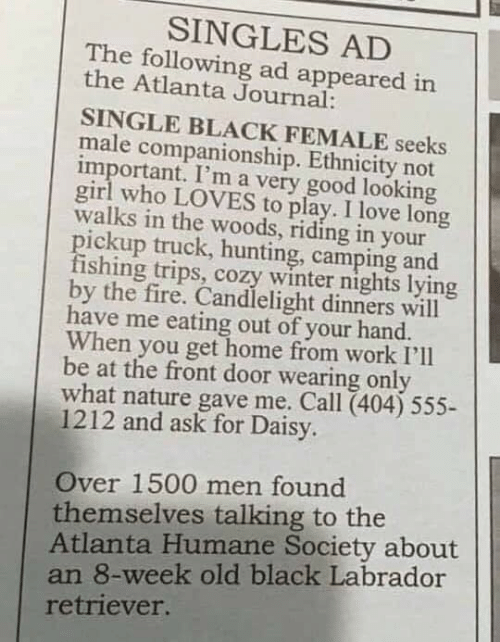Thomas Fiss is the Vice President of Music NFTs at OneOf, which is making waves with its sellout collections and high-profile collaborations, including Sports Illustrated, Warner Music, The Grammys, and many others — some yet to be announced. We sat down to chat with Thomas about creative partnerships, the authenticity of brands in the NFT space, environmental accountability, and more. Here are highlights from our conversation.
DND: Thomas, how did you get involved with NFTs?
 TF: I started out as an artist myself, on Capitol Records. And I realized that when partnerships were set up between artists and brands, or artists and other entities…often these were formulated ad hoc, and there wasn’t really a clear process. So my band and I ended up on the wrong end of the deal ourselves.
TF: I started out as an artist myself, on Capitol Records. And I realized that when partnerships were set up between artists and brands, or artists and other entities…often these were formulated ad hoc, and there wasn’t really a clear process. So my band and I ended up on the wrong end of the deal ourselves.
This really caused me to reframe how I approached my career, which I carried forward to working with other artists, in and respecting their best interests. I really take the approach of making sure that creative integrity is protected at nearly all costs. And equally that a partnership is entered into for the benefit of both parties. Which is how I got involved with NFTs, initially.
DND: Why are music and NFTs so well suited for each other?
TF: What I find particularly appealing about NFTs is their ability to open a two-way conversation between an artist and their fans, and to do it in a way that’s authentic and genuine. When done right, it protects the creative integrity that an artist brings to the table. I think it’s an interesting marketing tool for an artist to leverage, or least to consider, and something to add to their toolbox.
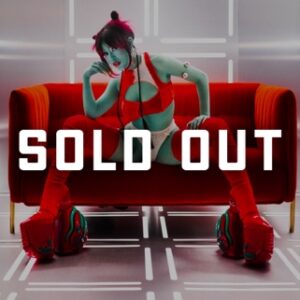
DND: Why would a music artist seek out a creative partnership with a company like OneOf?
TF: The idea that an artist can actually communicate with their fans is really powerful, and which is something that exists today with first-party data. Artists have email databases, some have SMS databases, and they can now have another line of direct communication through NFTs.
It takes the same amount of energy to send a tweet as it does to mint an NFT on our platform.
DND: But many artists who were skittish about NFTs at first are now coming around. Why?
TF: Until recently, I think the main cause of apprehension was environmental impact. This no longer has to be the case. OneOf specifically is incredibly environmentally-friendly. We like to say that it takes the same amount of energy to send a tweet as it does to mint an NFT on our platform, because we run on the Tezos blockchain…
DND: …which sounds like a foreign language to those not well versed on the technology side. How much knowledge does an everyday music fan need to participate?
TF: Well, on our platform, fans can go and purchase an NFT with a credit card. It’s as simple as buying a pack of gum. And we’re a custodial platform as well, so a fan doesn’t need to have any experience with crypto or any experience with NFTs. They can go create a profile on oneof.com, swipe their credit card, purchase their NFT from their favorite artists, and it sits securely in our platform. So it’s easy.
DND: Even though NFTs have gained legitimacy and mass appeal, there still seems to be an underground movement around them. Like whenever an upcoming drop suddenly enters the public consciousness seemingly out of nowhere, there’s some magic to it.
TF: Right.
DND: Is the mystique behind NFTs part of what makes them so alluring?

TF: It’s a great question. I think people are just attracted to the unknown and the uncertain. That’s why some collections have gained a lot of traction – because they left the roadmaps a bit vague, and so there’s that layer of like, “Okay, what’s next?” And we live in an experience-driven time where that kind “out-of-nowhere” discovery reigns supreme.
To add to that is the allure of celebrity. That’s never going away. And so, we can capture these ingredients, and combine them in the right way, you have something really magical.
Like any good campaign, an NFT drop requires a good story.
DND: It’s fascinating because the model behind NFTs is scarcity and selling out within a tight timeframe. To achieve this, you have to not only create awareness for a brand-new product, but also to drive demand and purchases under conditions where every second counts.
TF: It is a challenge, right?
DND: Yes…we can’t help ourselves – we see everything through a marketing lens. From a marketing perspective, how do you run a business model that is based entirely on selling out products that buyers didn’t even know they wanted until just before they go on sale?
TF: The way music artists operate is that you have to draw attention and level up against your previous release. And it’s no different with NFTs. The process involves creating a thoughtful presentation that adds value to fans, most importantly. And then you bring in all the secret recipes that you would expect from a good marketing strategy in general: first-party data, retargeting, social…
You also need a robust PR team that can lean in with media narratives and points of interest. There’s no easy path to achieving a sell-through with a lot of these things, but like any good campaign, an NFT drop requires a good story.
DND: What would drive someone like a Quincy Jones or Adam Fell to invest in an NFT platform like OneOf? For someone who’s already accomplished everything you can ever hope to do in the entertainment industry, let alone the music business, what’s left to prove with NFTs?
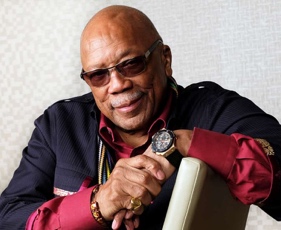 TF: I don’t know if I can answer that on their behalf, but I think the ethos of OneOf has really been to champion artists and do it in a way where they aren’t beholden to the traditional system. And I think that’s something that everyone at the company stands behind and certainly supports. We want to be a shepherd to the music industry and say, “Come with us…we’re going to actually genuinely take care of you and make sure that this is done right, and it’s going to be done right the first time.”
TF: I don’t know if I can answer that on their behalf, but I think the ethos of OneOf has really been to champion artists and do it in a way where they aren’t beholden to the traditional system. And I think that’s something that everyone at the company stands behind and certainly supports. We want to be a shepherd to the music industry and say, “Come with us…we’re going to actually genuinely take care of you and make sure that this is done right, and it’s going to be done right the first time.”
Of course we want big brands…it just needs to be done thoughtfully.
DND: When you hear about brands launching their own NFT initiatives, like Pepsi or Taco Bell or even Marriott…is this exciting because it grows the category as a whole and piques public interest, or do you see it as an exploitative when commercial brands start playing in the space and saying, “We do NFT too?”
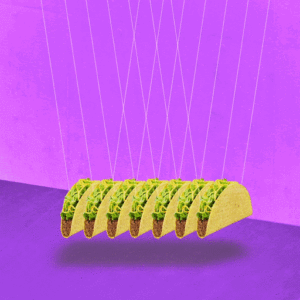 TF: Yeah. It’s so funny that you asked this question. I can’t say which brand it was, but I posted about it on my socials and I got a bunch of messages and DMs from people giving very conflicting responses. Some people were like, “Oh my goodness. This is incredible. It’s breaking this open.” But a lot of folks were, I think, a little turned off by it because they felt that it was almost diminishing the value that NFTs could potentially bring and attaching crass commercialization to it.
TF: Yeah. It’s so funny that you asked this question. I can’t say which brand it was, but I posted about it on my socials and I got a bunch of messages and DMs from people giving very conflicting responses. Some people were like, “Oh my goodness. This is incredible. It’s breaking this open.” But a lot of folks were, I think, a little turned off by it because they felt that it was almost diminishing the value that NFTs could potentially bring and attaching crass commercialization to it.
I straddle right in between the two. Of course it’s incredible, of course we want big brands. It would almost be irresponsible to say that we don’t or that it’s a threat. I think the reality is that, like anything, it just needs to be done thoughtfully. If it’s just meant to drive revenue, then yeah, that’s a little creepy, and it’s probably not the best way to tell a story. But if it’s done with a sense of care… I really don’t see the harm because you’re just bringing more people to the party. And if you do it with the right spirit, I think that’s fantastic.
DND: True, but overabundance of anything can lead to a saturation point and fatigue. Do NFTs really have the staying power to last 5, 15, 25 years, and evolve and adapt?
TF: As a gimmick, I think it may lose its luster. It’s going to lose its buzzworthiness at a superficial level. But I think right now, we’re just in that honeymoon phase where everyone is just so enthralled by the idea of including an NFT drop and a PR blast, versus subconsciously the value of that to the end consumer. We’ll get there, we’re going to get there soon.
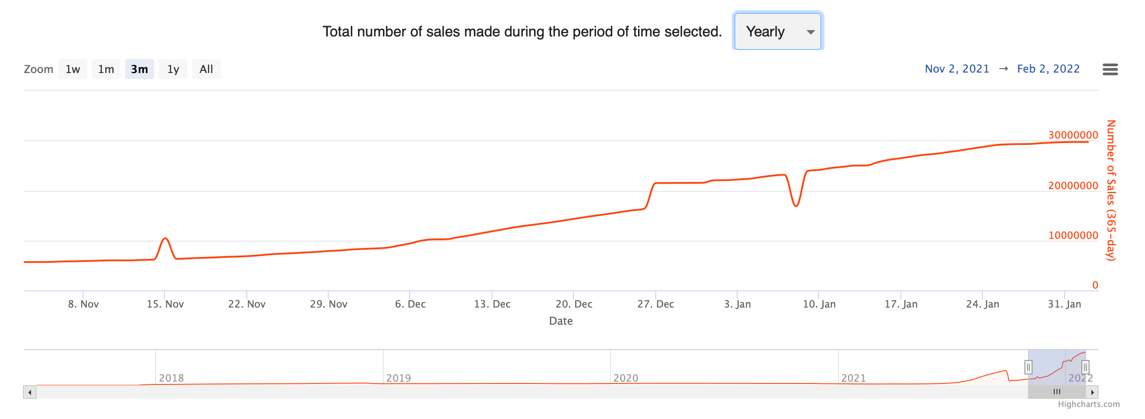
We’ve reached a place as a society where social currency is everything.
DND: With NFTs where the creator is so personally involved, and so giving of themselves, it creates a new kind of human connection between creator and purchaser. There’s a vulnerability and intimacy to it. What do you make of this?
TF: I actually remember dealing with this in 2005 or so, 2006, when Twitter was this brand new way of communicating. And it was that exact same question: is there too much intimacy with an artist oversharing or a fan feeling like they have too much accessibility? But ultimately, we’ve reached a place as a society where social currency is everything, and there’s a demand for accessibility. If that’s what the artist wants, and what their fanbase is used to, then great, fantastic. I think this is a way to support that.
DND: You touched on OneOf’s initiative to minimize its environmental footprint, which at present is still a differentiator in NFTs and crypto. Should this be part of the business model, that if you’re going to run a blockchain-based company, you must share in the responsibility of the environmental impact?
TF: It’s a big question. Goodness. Yeah. I mean, the answer is yes. That also opens up a massive question mark around literally every industry that has existed and does exist, from fashion to fossil fuels obviously, to… I’m going down a rabbit hole, but ultimately yes, absolutely.
DND: But do NFTs and crypto get held to a higher standard because of the spotlight on them?
TF: I would hope so. I’d hope businesses in this space care about their impact, especially if they are tethered to celebrities or other brands in any capacity. It should become a standard. I really believe that.
There’s an incredible opportunity to really push the boundaries.
DND: Similar or perhaps parallel to NFTs, there are countless metaverses springing up, with deep-pocketed collectors spending the equivalent of real-world dollars on meta-real estate, virtual concerts and other digital goods and experiences. Do you find this exciting, or is it too much too fast?

TF: I actually love it. I think that it’s incredible that people are spreading their wings a little. Ultimately, it’s just up to our imagination how far we can push things. Music artists specifically are opening the door for their global community to interact with one another or with the artist in a way that has been impossible. Right? Historically, artists go on tour. They can only play at certain venues to certain capacities. You start talking about a metaverse experience. It really opens up scalability for artists. And there’s an incredible opportunity to really push the boundaries.
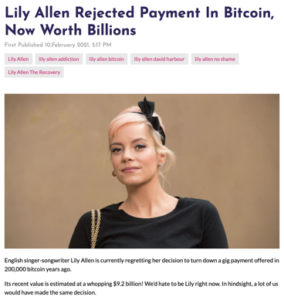 DND: And no one wants to be left behind. One of the best stories is how, in 2009, Lily Allen was offered hundreds of thousands of bitcoin to play a concert in Second Life, and she turned it down. Similarly, I remember a year ago, we pitched a client, a brand, on NFTs and they said, “We like it but we don’t get it.” We figured, “Okay. We’re a little too early on it.”
DND: And no one wants to be left behind. One of the best stories is how, in 2009, Lily Allen was offered hundreds of thousands of bitcoin to play a concert in Second Life, and she turned it down. Similarly, I remember a year ago, we pitched a client, a brand, on NFTs and they said, “We like it but we don’t get it.” We figured, “Okay. We’re a little too early on it.”
TF: For sure. I think eventually, most brands are going to start to get hip to it and realize, “Oh my gosh. This could be a genuine line of communication to our audience.”
DND: Give us an exclusive. What’s the next top-secret drop on OneOf that you haven’t told anyone about yet?
TF: Goodness. I don’t know if I can go into that detail, but what I can tell you is that over the next, gosh, four months, we have some really incredible artist drops that are going to be coming down the pipeline. And also large partnerships that will really impact the music community for the greater good. I’ll be very proud to share those when they come out. It’s going to be really, really special.
—
Like what you see here?
For more about OneOf, and to visit them on social for the latest updates, please visit oneof.com
For more about Do Not Disturb Creative, and our areas of specialization, please visit our homepage.
 FG: I had so many. Everybody needs someone to support them. At Young & Rubicam, for example, I luckily got to know the president of the agency,
FG: I had so many. Everybody needs someone to support them. At Young & Rubicam, for example, I luckily got to know the president of the agency,  FG: Well, in the Jell-O situation, I had to go over the Brand Manager’s head and show the work to his boss before it was approved. That’s always a dangerous move. In this case, the ad in question was for a Jell-o cookie recipe and the client’s headline was “Jell-o Cookie Recipe.” They were ready to run it. The ad I got approved was “How To Make Jell-o That Crumbles.” Turns out it was the number one most-read ad out of some 5,000 ads, in both TV Guide and Reader’s Digest, for the entire year.
FG: Well, in the Jell-O situation, I had to go over the Brand Manager’s head and show the work to his boss before it was approved. That’s always a dangerous move. In this case, the ad in question was for a Jell-o cookie recipe and the client’s headline was “Jell-o Cookie Recipe.” They were ready to run it. The ad I got approved was “How To Make Jell-o That Crumbles.” Turns out it was the number one most-read ad out of some 5,000 ads, in both TV Guide and Reader’s Digest, for the entire year. FG: Okay. Don took that home one day, showed it to his wife who happened to have a couple of her girlfriends there that day. They all had kids and they were all, “Oh my God, my kids are going to be scared of that. You can’t show that.” He came back and said he wasn’t going to run the commercial. This was after we shot it. It was a very expensive commercial to produce too. Anyway, it took me five hours but I convinced him to run it. And Teddy Ruxpin generated $110 million in sales in its first year, making it the first American company at the time to achieve this revenue level in its first year, ahead of even Compaq Computer, which reached $105 million.
FG: Okay. Don took that home one day, showed it to his wife who happened to have a couple of her girlfriends there that day. They all had kids and they were all, “Oh my God, my kids are going to be scared of that. You can’t show that.” He came back and said he wasn’t going to run the commercial. This was after we shot it. It was a very expensive commercial to produce too. Anyway, it took me five hours but I convinced him to run it. And Teddy Ruxpin generated $110 million in sales in its first year, making it the first American company at the time to achieve this revenue level in its first year, ahead of even Compaq Computer, which reached $105 million.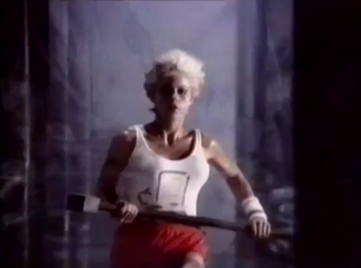 FG: Not really. The 1984 commercial was a part of some forty pieces of advertising that were presented for the introduction of the Macintosh. All of the work was very good. As far as making history, we thought the product itself was really the breakthrough. And the commercial, after it was produced, was actually roadblocked by
FG: Not really. The 1984 commercial was a part of some forty pieces of advertising that were presented for the introduction of the Macintosh. All of the work was very good. As far as making history, we thought the product itself was really the breakthrough. And the commercial, after it was produced, was actually roadblocked by  FG: I personally worked really hard at branding our agency. I have a chapter in my new book called “Why Would Anyone Want a Clown as Part of Its Branding?” It talks about everything that we did to ensure that people understood what our objective was, what our goal was, what we would and would not tolerate. Tom Peters and Nancy Austin from Stanford wrote a book called
FG: I personally worked really hard at branding our agency. I have a chapter in my new book called “Why Would Anyone Want a Clown as Part of Its Branding?” It talks about everything that we did to ensure that people understood what our objective was, what our goal was, what we would and would not tolerate. Tom Peters and Nancy Austin from Stanford wrote a book called 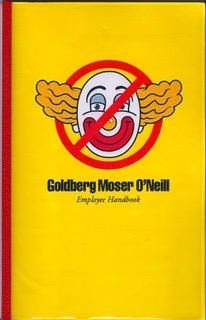 FG: I really think we had smarter people than most agencies did. We hired based on intelligence, merit, and a demonstrated commitment to creative ideas and understanding the importance of that. I’m about to publish our employee manual in addition to my new book, just to make it available. You can soon get the world’s best employee manual for a buck. Nick Wale at DSP, a very successful publisher, has agreed to do it.
FG: I really think we had smarter people than most agencies did. We hired based on intelligence, merit, and a demonstrated commitment to creative ideas and understanding the importance of that. I’m about to publish our employee manual in addition to my new book, just to make it available. You can soon get the world’s best employee manual for a buck. Nick Wale at DSP, a very successful publisher, has agreed to do it. FG: There’s an old expression that says the day you get the account is the day you started losing it and it’s probably true. It’s worse today I’m sure. From what I see, far worse. Something inevitably happens. It’s usually a marketing guy that changes and he’s told, usually by the CEO, “You run the marketing and the advertising.” It’s a tough business in that regard. It’s very difficult to protect yourself. Clients steal people from you. They have unspoken friends at other agencies. They cut different deals behind your back and you don’t know about it. It’s very hard. But we picked up another computer company, Micron, only a few days after we officially resigned from Dell. Now that’s how you resign an account artistically. Sweet!
FG: There’s an old expression that says the day you get the account is the day you started losing it and it’s probably true. It’s worse today I’m sure. From what I see, far worse. Something inevitably happens. It’s usually a marketing guy that changes and he’s told, usually by the CEO, “You run the marketing and the advertising.” It’s a tough business in that regard. It’s very difficult to protect yourself. Clients steal people from you. They have unspoken friends at other agencies. They cut different deals behind your back and you don’t know about it. It’s very hard. But we picked up another computer company, Micron, only a few days after we officially resigned from Dell. Now that’s how you resign an account artistically. Sweet!